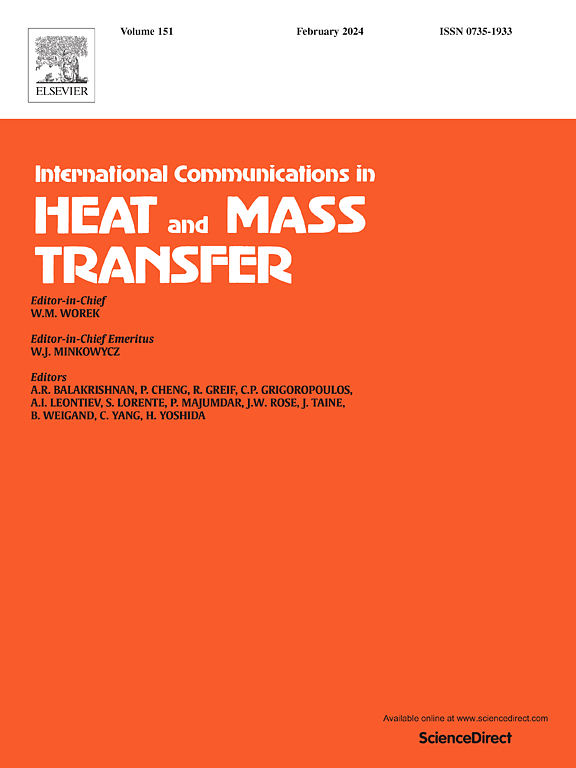Numerical study on melting-solidification cycle of phase change energy storage unit: Role of fin and metal foam hybrid structure
IF 6.4
2区 工程技术
Q1 MECHANICS
International Communications in Heat and Mass Transfer
Pub Date : 2025-02-24
DOI:10.1016/j.icheatmasstransfer.2025.108776
引用次数: 0
Abstract
The low thermal conductivity inherent to phase change materials (PCMs) presents challenges for implementing phase change energy storage (PCES) technologies. In this study, the enhanced heat transfer properties of 9 fins, copper metal foam with 0.98 porosity-10 PPI, and fin-metal foam composite structures are compared with pure PCM structures in square PCES units. The charging and discharging process of four structures in a complete heat storage and release cycle is studied by numerical simulation. Firstly, feasibility analysis and experimental verification are carried out to verify the accuracy of the numerical model. Then, the liquid phase behavior, temperature gradient and energy storage/release performance of the four PCES structures are compared. The results show that the fin-metal foam composite structure can further improve the phase transition rate compared with a single enhanced heat transfer measure. During melting and solidification, the storage period and release period of PCM structure are shortened by 83.91 % and 96.38 % respectively. At the end of the charging and discharging process, the average heat storage and heat release rate of the composite structure are 466.40 % and 24.91 times higher than that of the pure PCM structure, respectively. However, due to the use of fin-metal foam, the amount of heat absorption and release in the phase change material is reduced by 9.08 % and 5.89 %.
求助全文
约1分钟内获得全文
求助全文
来源期刊
CiteScore
11.00
自引率
10.00%
发文量
648
审稿时长
32 days
期刊介绍:
International Communications in Heat and Mass Transfer serves as a world forum for the rapid dissemination of new ideas, new measurement techniques, preliminary findings of ongoing investigations, discussions, and criticisms in the field of heat and mass transfer. Two types of manuscript will be considered for publication: communications (short reports of new work or discussions of work which has already been published) and summaries (abstracts of reports, theses or manuscripts which are too long for publication in full). Together with its companion publication, International Journal of Heat and Mass Transfer, with which it shares the same Board of Editors, this journal is read by research workers and engineers throughout the world.

 求助内容:
求助内容: 应助结果提醒方式:
应助结果提醒方式:


